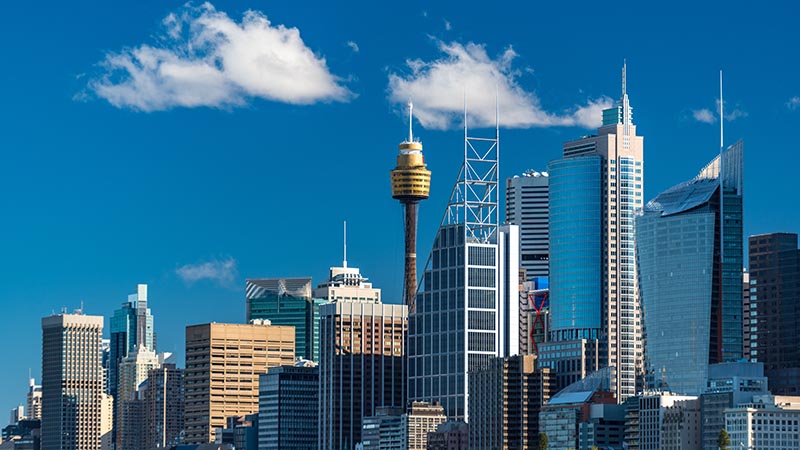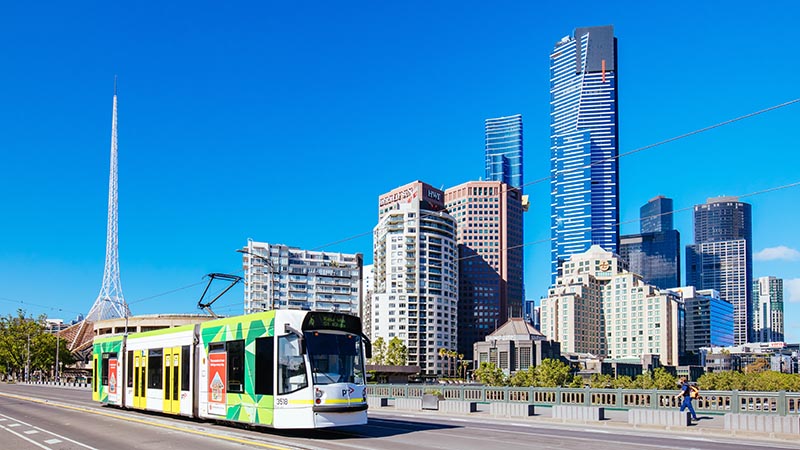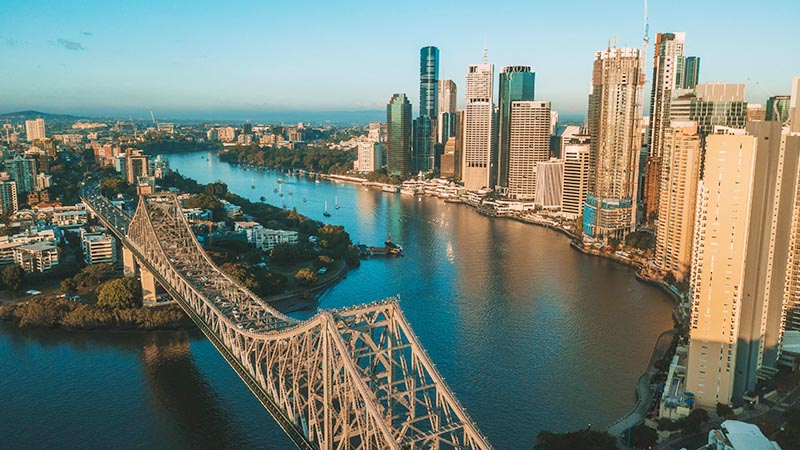Four experts reveal east coast's 2024 hotspots and market drivers
Four of our contributing authors provide property investors with their top east coast suburb picks for 2024 and share their insight into what will shape the property market this year.
Much attention has centred on the west of the country, with Perth, Adelaide and their accompanying regional markets delivering impressive capital growth throughout 2023.
The eastern states have been more of a mixed bag, with Brisbane and regional Queensland and Sydney delivering results as impressive as Western Australia and South Australia, while Melbourne, regional Victoria, regional New South Wales, Tasmania and Canberra have floundered.
API Magazine has consulted with four of its regular contributing authors - each an east coast property market expert - to deliver their verdicts on what will drive eastern states property markets over the course of the year and where investors should be turning their attention to in 2024.
API Magazine: How do you see national property prices tracking in 2024, after they rose 8.3 per cent in 2023?
Terry Ryder, Founder and Managing Director, Hotspotting: I expect the average national result for house prices to be similar to 2023.
The key influences that dictated last year’s results remain in place, notably the shortage of homes, the imbalance between supply and demand, and strong population growth.
Economists continue to obsess over interest rates as the big factor, apparently refusing to learn the key lesson of 2023, i.e. that there are more powerful forces in play than interest rates and that rising rates do not create major price decline.
In the second half of the calendar there is likely to be some positive impact from tax cuts and a potential psychological boost from a cut to interest rates, which many commentators are predicting. But the biggest factor will continue to be a supply shortage.
Melinda Jennison, Buyers Agent, Streamline Property Buyers, and President REBAA
I anticipate varying growth patterns in property markets across the country, influenced by local factors affecting supply and demand. Towards the end of 2023, we observed a divergence in the growth trends between markets characterised by minimal supply and those where listing volumes reverted to typical long-term averages.
Cities that maintain low listing volumes in throughout 2024, as Brisbane, Perth and Adelaide did in 2023, will likely persist on an upward trajectory.
In the likely scenario interest rates remain at or near current levels, it is probable affordable markets will continue to experience strong demand, contributing to price pressure in these locations.
Andrew Bell, Owner-operator, Ray White Surfers Paradise Group
The two strong drivers of real estate pricing in 2024 will be the battle between the influence of interest rates and the pressures on real estate from huge population growth and the dramatic undersupply of newly constructed properties.
With interest rates getting closer, if not already at their peak and with a significant tax reduction in mid-2024 and likely interest rate drops by the end of 2024, interest rates are likely to take a secondary position to the incredible market pressures coming to fruition from record population growth and a ten-year low in construction of new properties.
Price rises, although perhaps modest, will be the outcome for 2024.
Cate Bakos, Owner, Cate Bakos Property
With lighter interest rate headwinds in 2024, higher investor participation and tight unemployment remaining, I see 2024 continuing to produce price growth. Not all cities and towns will deliver strong gains, but national property prices will likely match or eclipse 2023’s performance in my view.
API Magazine: Which areas stand out as potential investor hotspots for 2024?
Terry Ryder (national): One of the big emerging trends is rising demand for apartments in good locations. Multiple cohorts - downsizers, lifestyle buyers, first home buyers, migrants, investors seeking affordability and higher yields - are causing a rise in demand for apartments.
The inner-city precincts of Sydney, Brisbane and Melbourne are becoming notable hotspots. In regional Australia we expect good performance this year, and beyond, in the Gold Coast, Wollongong, and Gladstone should compete with the Bunbury and Mt Gambier markets.
Melinda Jennison (Brisbane): Three Brisbane suburbs stand out for me.
Herston is just a stone’s throw away from the Brisbane CBD, making it highly accessible to the city’s amenities and employment opportunities nearby. The suburb is surrounded by excellent infrastructure, being located on the Brisbane Busway as well as being a suburb that will benefit from the Brisbane Metro once this is completed.
Additionally, the Brisbane City Council is transforming Victoria Park, just a short stroll away, into an iconic public parkland with natural landscape, revitalising wetlands and waterholes and plenty of unique places for families and couples to relax and unwind on the city fringe. Many of the events for the 2032 Olympic Games will be held in and around Herston.
Keperra is located along the north-west train line in Brisbane, which is set to benefit from more frequent services following the completion of the Cross River rail project in the city centre. Serviced by two train stations, it is a location where investors can still buy at or around the median house value for all of Greater Brisbane, despite being located within a 10km ring from the Brisbane CBD. With around 60 per cent of the demographic group being owner occupiers, Keperra is showing signs of more home upgrades and renovations starting to take shape.
Tarragindi, just south of the Brisbane CBD, has 40 per cent of employed people in this suburb in professional roles, with median incomes here much higher than the Queensland state average. It offers a mix of diverse housing, being one of the closest suburbs to the CBD that is not dominated by character Queenslander homes that are protected from demolition. Therefore, we are seeing older homes being demolished, and replaced with architecturally designed properties more in line with the demographic changes within the area.
Andrew Bell (Gold Coast): Southport is the CBD of the Gold Coast and the centre of our medical, education and government services. With the important pool growing rapidly there is an acute shortage of rental accommodation in close proximity and tenant demand has never been greater. Adjoining suburbs such as Labrador, Parkwood, Molendinar and Ashmore will also be increasingly viewed as hotspots, as they too are within reasonable distance to the Southport market.
Cate Bakos (Melbourne): Some of our high-performing capitals will continue to thrive, but speaking specifically about the Victorian market, I have confidence that houses in the middle-ring and established areas in Melbourne’s north will thrive in 2024, including suburbs such as Coburg, Preston, Thomastown, Lalor and Watsonia.
Contrary to popular belief, I feel that well-located, Melbourne boutique apartments and villa units will become even more popular choices for first home buyers. With the added appeal for cashflow-sensitive investors who are searching for stronger rental yields, combined with the high price disparity between units and houses, I think this is a segment to watch.
Units have underperformed in Melbourne for more than ten years and the ratio between houses and units is at a high. This relationship is typically quite elastic so we can anticipate a reprieve in unit growth soon.
API Magazine: Interest rates, population growth and supply are cited as major drivers of the market – what other variables do you see having a significant impact on the market in 2024?
Terry Ryder: Rising demand, boosted by high population growth, at a time of low supply - we’re building far too few new dwellings - continues to be the biggest influence.
I don’t agree that interest rates are a major driver of the market. We’ve had rates rising since May 2022 and yet 2023 produced good capital growth in most locations, including above 10 per cent in some of the capital cities.
The scheduled mid-year tax cuts will have a positive impact in the second half of the year. Another factor likely to emerge in 2024 is a waning of the Perth boom, after three strong years: there was a notable reduction in sales volumes in the second half of 2023 and Perth is less likely to be a price growth leader in 2024, directing more investor activity back to the eastern states.
Melinda Jennison: Other key drivers can include affordability constraints, international tensions, and the escalating cost of living. Any significant shifts in these factors may influence the trajectory of property values throughout the next 12 months. Changes in these key drivers could potentially affect buyer confidence, ultimately influencing the direction of property prices throughout 2024.
Cate Bakos: High employment and consumer confidence. Wages growth also plays a key role, and we have finally seen this filter through in our stats too. Lending policy and credit availability will see further easing. If our buffer rates ease, this will have a similar impact as the cash rate dropping.
Andrew Bell: Consumer confidence is a fundamental driver of the real estate market. Key to that confidence is the state of the economy and factors such as cost of living expenses, wage growth, unemployment levels, etcetera. If people feel confident about the immediate future they will spend and if they don’t, they will be inclined to save.
























